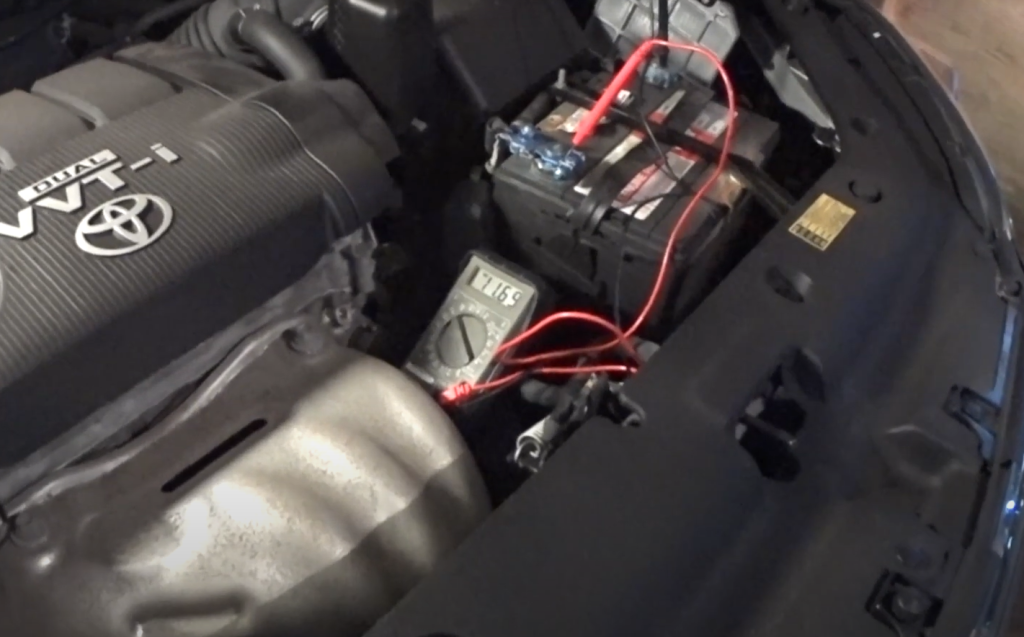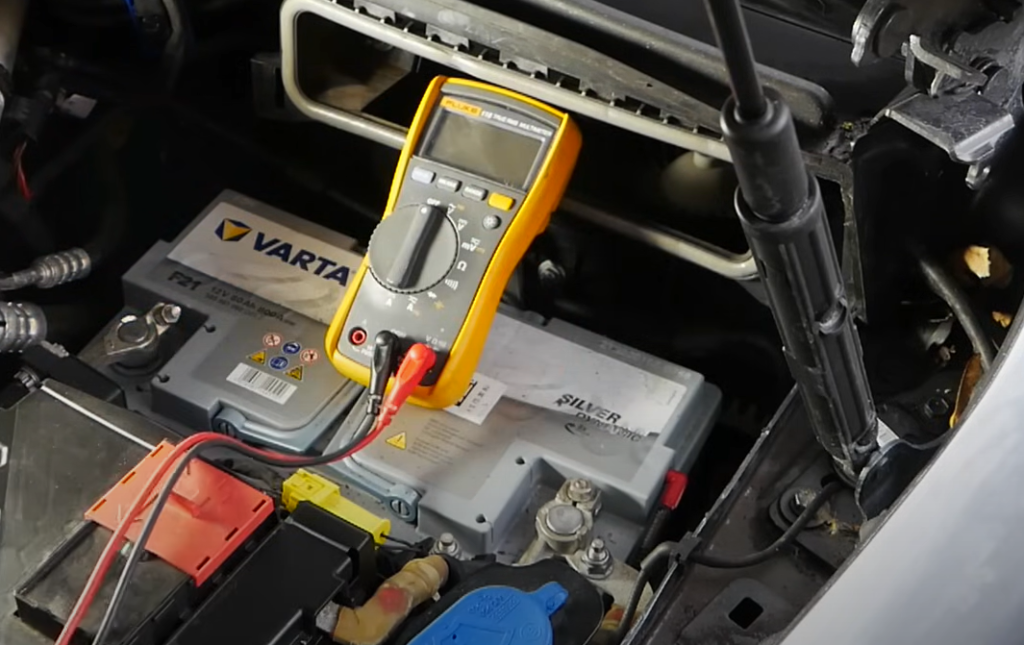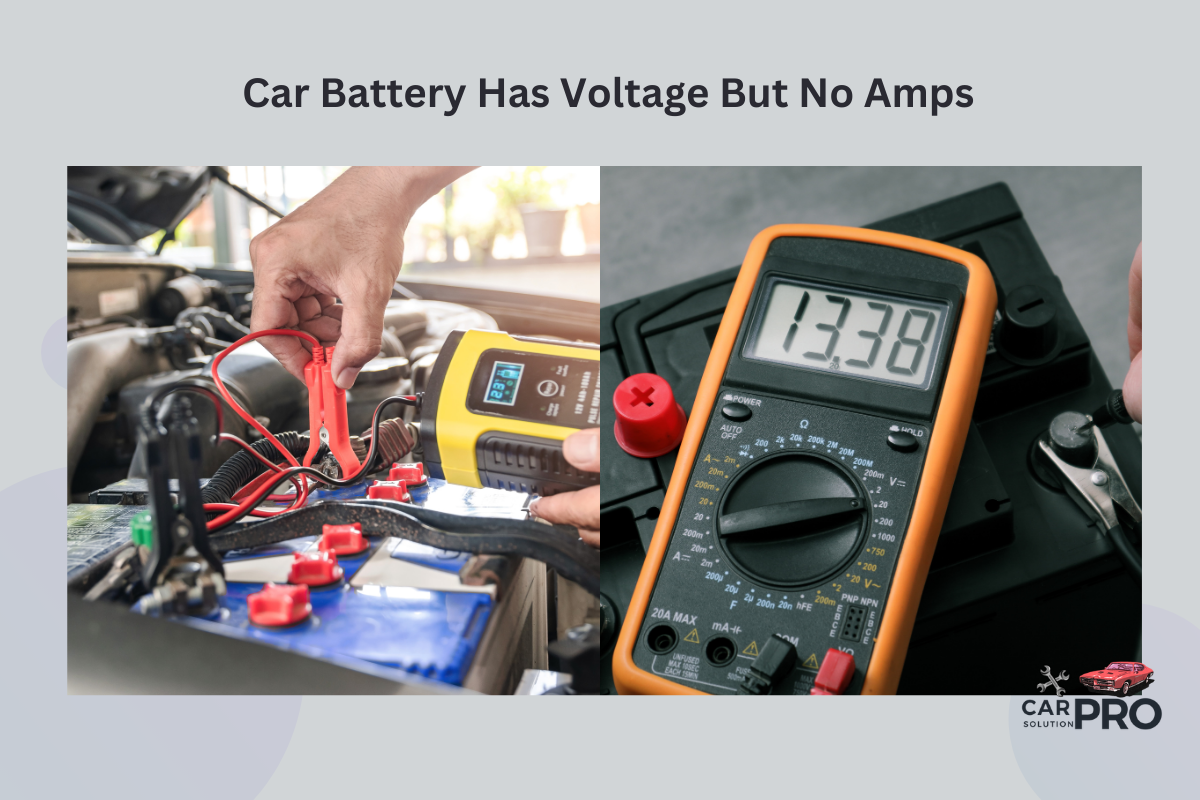Car batteries can sometimes confuse drivers by showing voltage but not delivering any amps. This situation often leaves people wondering why their vehicle won’t start despite the battery seeming to have power. A car battery with voltage but no amps usually indicates a problem with the battery’s internal components or connections, preventing it from supplying the necessary current to start the engine.
Understanding this issue can help car owners diagnose and fix the problem quickly. It’s important to know that voltage alone isn’t enough for a battery to function properly. The battery needs to provide sufficient amperage to power the starter motor and other electrical systems in the vehicle.
There are several reasons why a car battery might show voltage but fail to deliver amps. These can range from internal damage to high resistance in the electrical system. Identifying the root cause is crucial for finding the right solution and getting your car back on the road.
Key Takeaways
- Car batteries require both voltage and amperage to function properly
- Internal damage or high resistance can cause a battery to show voltage without delivering amps
- Regular battery testing and maintenance can help prevent unexpected starting problems
Understanding Car Battery Fundamentals
Car batteries provide the electrical power needed to start and run vehicles. They store chemical energy and convert it to electrical energy when needed.
Voltage vs. Amperage
Voltage is the electrical pressure in a battery. It’s measured in volts (V). A typical car battery has 12 volts. Amperage is the flow of electric current. It’s measured in amps (A).
A car battery can have voltage but no amps in some cases. This means the battery shows electrical pressure but can’t deliver enough current. It’s like having water pressure in pipes but no water flowing.
Voltage stays fairly constant in a healthy battery. Amperage varies based on the electrical load. Starting a car requires high amperage, often 100 amps or more. Running lights or the radio needs much less.
Role of a Car Battery
The main job of a car battery is to start the engine. It powers the starter motor, which turns the engine over. This takes a lot of current for a short time.
Once running, the alternator takes over. It powers the car’s electrical systems and recharges the battery. The battery acts as a stabilizer for the electrical system.
A car battery also:
- Powers lights and accessories when the engine is off
- Provides extra power when electrical demands are high
- Stores energy for future use
Battery capacity is measured in amp-hours. A typical car battery has 48 amp-hours. This means it can supply 1 amp for 48 hours, or 48 amps for 1 hour.
Diagnosing the Issue
When a car battery shows voltage but no amps, it’s crucial to identify the problem quickly. Proper diagnosis involves recognizing key symptoms and following specific steps to pinpoint the issue.
Common Symptoms
A battery with voltage but no amps often displays telltale signs. The car may not start, even though the battery appears charged. Lights and electronics might work, but the engine won’t turn over.
In some cases, you might hear a clicking sound when turning the key. This can indicate that the starter is trying to engage, but there’s not enough current to crank the engine.
Another sign is a rapid voltage drop when the battery is disconnected from the car. If the voltage plummets within minutes, it suggests internal battery problems.
Initial Assessment Steps
To diagnose the issue, start with these steps:
- Check battery voltage with a multimeter
- Inspect battery terminals for corrosion
- Look for signs of physical damage to the battery
Next, perform a load test to measure the battery’s ability to deliver current. This test can reveal if the battery has high internal resistance, which prevents it from supplying amps.
If the battery passes the load test, check the alternator. A faulty alternator can cause the battery to drain quickly, leading to a no-amps situation.
Lastly, examine the starter and its connections. A bad starter can draw excessive current, causing the battery to appear drained.
Potential Causes for Voltage without Amperage

A car battery may show voltage but fail to deliver amperage due to several issues. These problems can prevent the battery from supplying the necessary current to start the engine or power electrical systems.
Internal Resistance
Internal resistance in a battery can increase over time, limiting its ability to provide sufficient current. This resistance acts like a blockage, allowing voltage to be measured but restricting amperage flow.
As batteries age, chemical changes inside can raise internal resistance. Repeated deep discharges or extreme temperatures may speed up this process. A battery with high internal resistance might still show 12 volts when tested, but it can’t deliver enough amps to start the car.
Testing internal resistance requires special equipment. Mechanics use load testers or conductance meters to check a battery’s health beyond just voltage readings.
Sulphation of Battery Plates
Sulphation occurs when lead-acid batteries are left discharged for long periods. It forms hard crystals on battery plates, reducing the surface area for chemical reactions.
This process greatly decreases a battery’s capacity to produce current. Sulfated batteries may show normal voltage but fail to deliver amps when needed.
Signs of sulphation include:
- Slow cranking
- Battery not holding charge
- Increased charging time
In some cases, desulphation techniques can restore battery function. However, severe sulphation often requires battery replacement.
Faulty Connections or Corrosion
Poor electrical connections can prevent a battery from delivering its full amperage. Corrosion on battery terminals is a common culprit, creating resistance in the circuit.
Loose or damaged cables can also cause this issue. Even if voltage reads normal at the battery, corroded connections block current flow to the starter and other components.
To check for connection problems:
- Inspect battery terminals for white, green, or blue buildup
- Ensure cables are tight and free from damage
- Clean corroded parts with a wire brush and baking soda solution
Fixing connection issues often solves the problem of voltage without amperage. Regular battery maintenance helps prevent these problems.
Testing the Battery
A proper battery test involves checking voltage and current under load. This helps determine if the battery can deliver enough power to start the engine and run electrical systems.
How to Perform a Load Test

To do a load test, you’ll need a load tester. This device puts a load on the battery to simulate starting the engine.
Here are the steps:
- Connect the load tester to the battery terminals
- Turn on the tester for 15 seconds
- Check the voltage reading
A healthy battery should maintain above 9.6 volts during the test. If it drops below this, the battery may be failing.
For a simpler test, try starting the engine. If it cranks slowly or won’t start, the battery might lack sufficient amps despite showing good voltage.
Analyzing Test Results
When analyzing load test results, pay attention to both voltage and amperage. A battery with voltage but no amps may still read 12 volts, but fail under load.
Key things to look for:
- Voltage drop during load test
- Cranking amps compared to battery rating
- Battery age and condition
If voltage drops quickly under load, it suggests high internal resistance. This means the battery can’t deliver enough current.
A battery that fails a load test likely needs replacement. Sometimes, recharging can help if the battery was just deeply discharged. But if problems persist, it’s time for a new battery.
Troubleshooting and Solutions
When a car battery has voltage but no amps, there are several steps to diagnose and fix the issue. These methods range from do-it-yourself approaches to seeking professional help.
Reconditioning the Battery
Cleaning the battery terminals is a good first step. Corrosion can prevent proper current flow. Use a wire brush to scrub away any buildup.
Check for loose connections. Tighten any loose battery cables or clamps.
Try a slow charge. Connect the battery to a charger set to a low amperage for 24-48 hours.
Test each cell’s specific gravity using a hydrometer. This can reveal if one cell is faulty.
If these steps don’t work, the battery may have internal damage or sulfation. A desulfator device can sometimes revive the battery by breaking down sulfate crystals.
Professional Repair or Replacement
If DIY methods fail, it’s time to seek expert help. A mechanic can perform advanced diagnostics to pinpoint the exact problem.
They may use specialized equipment to test the battery’s capacity and internal resistance.
If the battery is beyond repair, replacement is necessary. A professional can recommend the right battery for your vehicle.
They’ll also check the alternator and starter. These components can cause similar symptoms if faulty.
Consider upgrading to a higher quality battery for better performance and longevity.
Frequently Asked Questions
Car batteries can sometimes show voltage but fail to provide enough current. This puzzling situation has several potential causes and explanations.
Why does my car battery show voltage but not provide enough current to start the car?
A car battery may show voltage but lack current due to sulfation or internal damage. Sulfation occurs when lead-sulfate crystals build up on battery plates, reducing its ability to hold a charge.
Internal damage like corroded connections or broken cells can also prevent proper current flow. These issues allow voltage to remain while limiting amperage output.
What could cause a battery to have voltage but no cranking power?
Loose or corroded terminals are common culprits. They create resistance, blocking current flow while still allowing voltage to register.
Extreme temperatures, especially cold, can also reduce a battery’s ability to deliver power. This results in adequate voltage but insufficient cranking amps.
How can a battery display a full voltage reading yet fail to supply amps?
A battery can show full voltage when unloaded but drop significantly under load. This indicates weak or damaged cells unable to maintain charge.
Internal short circuits may also cause this issue. They allow voltage to read normally but prevent proper current distribution.
Why might a car battery indicate 12 volts but the vehicle won’t start?
A reading of 12 volts doesn’t guarantee sufficient power for starting. The battery may be partially discharged or have reduced capacity due to age or damage.
Alternator issues can also lead to this problem. A faulty alternator may not properly charge the battery, leaving it with voltage but insufficient amperage.
Can a battery show the correct voltage but still be defective?
Yes, a battery can display proper voltage while being defective. Internal damage or sulfation may allow voltage to register correctly but prevent proper current flow.
Age-related deterioration can also cause this issue. As batteries age, their ability to hold and deliver charge diminishes, even if voltage readings appear normal.
What are common reasons for a battery to have voltage but the car is not starting?
Sulfation, loose connections, and internal short circuits are frequent causes. These issues can all result in adequate voltage but insufficient current.
Extreme temperatures, particularly cold, can also lead to this problem. Cold weather reduces battery efficiency, limiting its ability to deliver necessary starting power.


